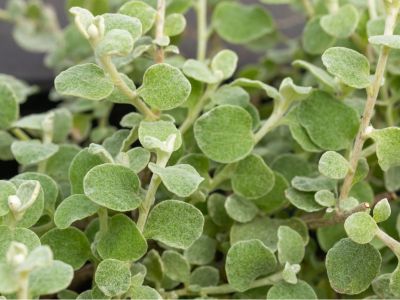Licorice Plant in Containers
As it’s actually a vine, licorice plants growing in containers are used for its unusual foliage. Flowers may appear on the licorice vine but are not significant or showy. When adding licorice vine to a combination pot, plant it on the edges so that it can cascade over the sides. Licorice plants in containers grow well in full sun to part shade. Choose a tall container that allows plenty of space for the licorice vine to spill over the sides. Window boxes or containers elevated on deck railings make it easier for care of Helichrysum licorice, such as watering. While licorice vine likes its soil to dry out slightly, it may be necessary to water every day in summer when growing licorice plant in containers. Hot temperatures and small containers may even require water more than once daily. When learning how to grow a licorice plant in a pot with other plants, use a good quality potting soil that offers good drainage, yet retains moisture. You may also use the moisture retention packets, but in a limited number. Limit fertilization to the licorice plant. Pinch the ends of the licorice plant if it gets too long; otherwise, this is not necessary.
Growing Licorice Plants with Others
When planting in a large pot, add rows of flowers of ascending heights inside the licorice planting, with the tallest plant in the center. Combination planters that are only viewed from one side may use the tallest plants in the back. Include companion plants that have similar water and sun needs. Fuzzy, pubescent leaves of the licorice vine have a silvery gray color, and cultivars of licorice, Helichrysum petiolare, such as ‘White Licorice’ contrast nicely with other foliage in the container. Companion plants for the licorice plant in containers encompass a range of upright and colorful specimens. If you wish to locate the container in a partial shade area, choose a colorful, upright coleus to center in the pot. A full sun area companion may be Celosia cockscomb, or any long-lasting summer flower. Licorice plant in containers may have companions in the cool color family, such as pinks and yellows or the hot color family, like reds and oranges. You may use other silvery specimens, such as silver mound Artemisia, with different textures.
